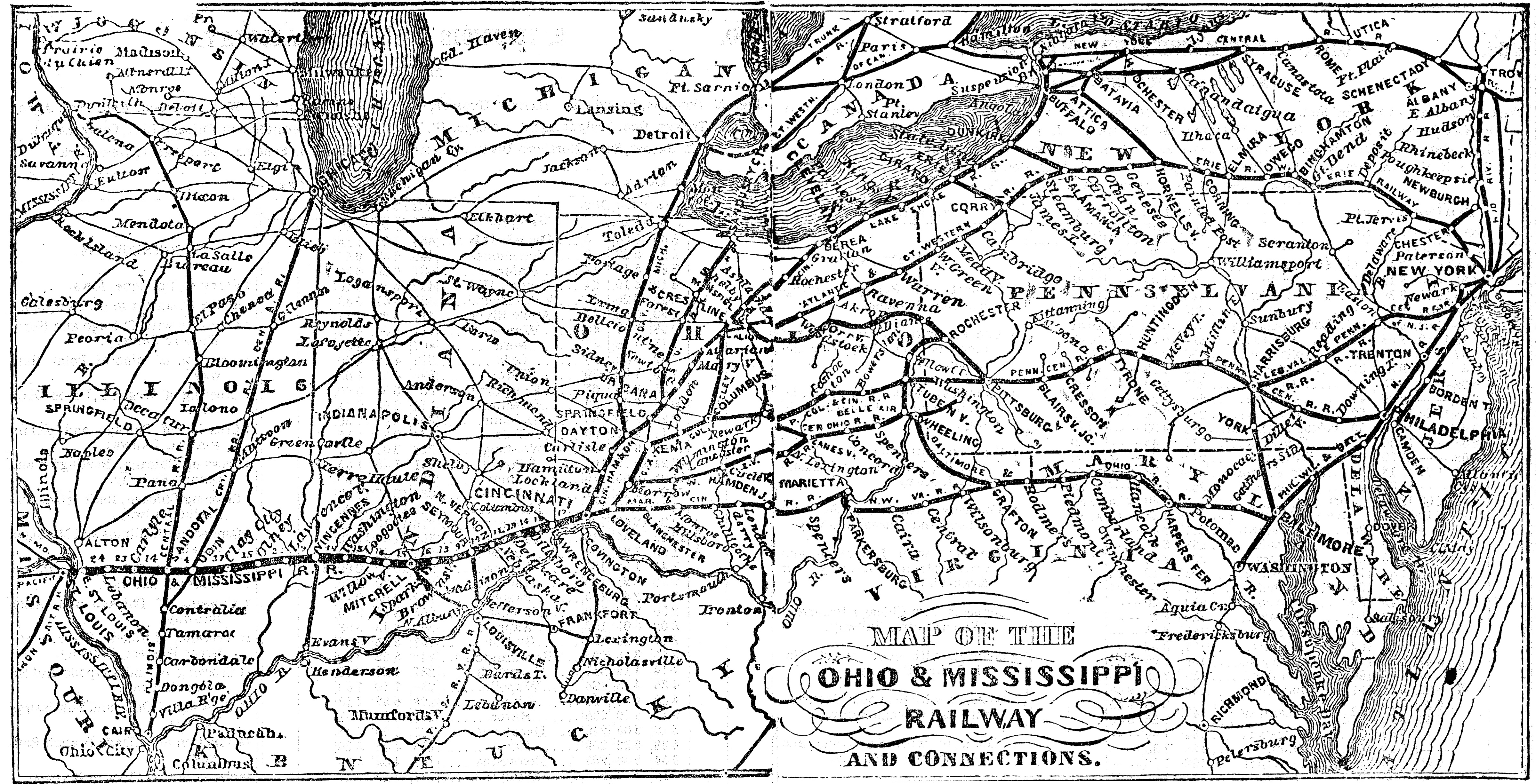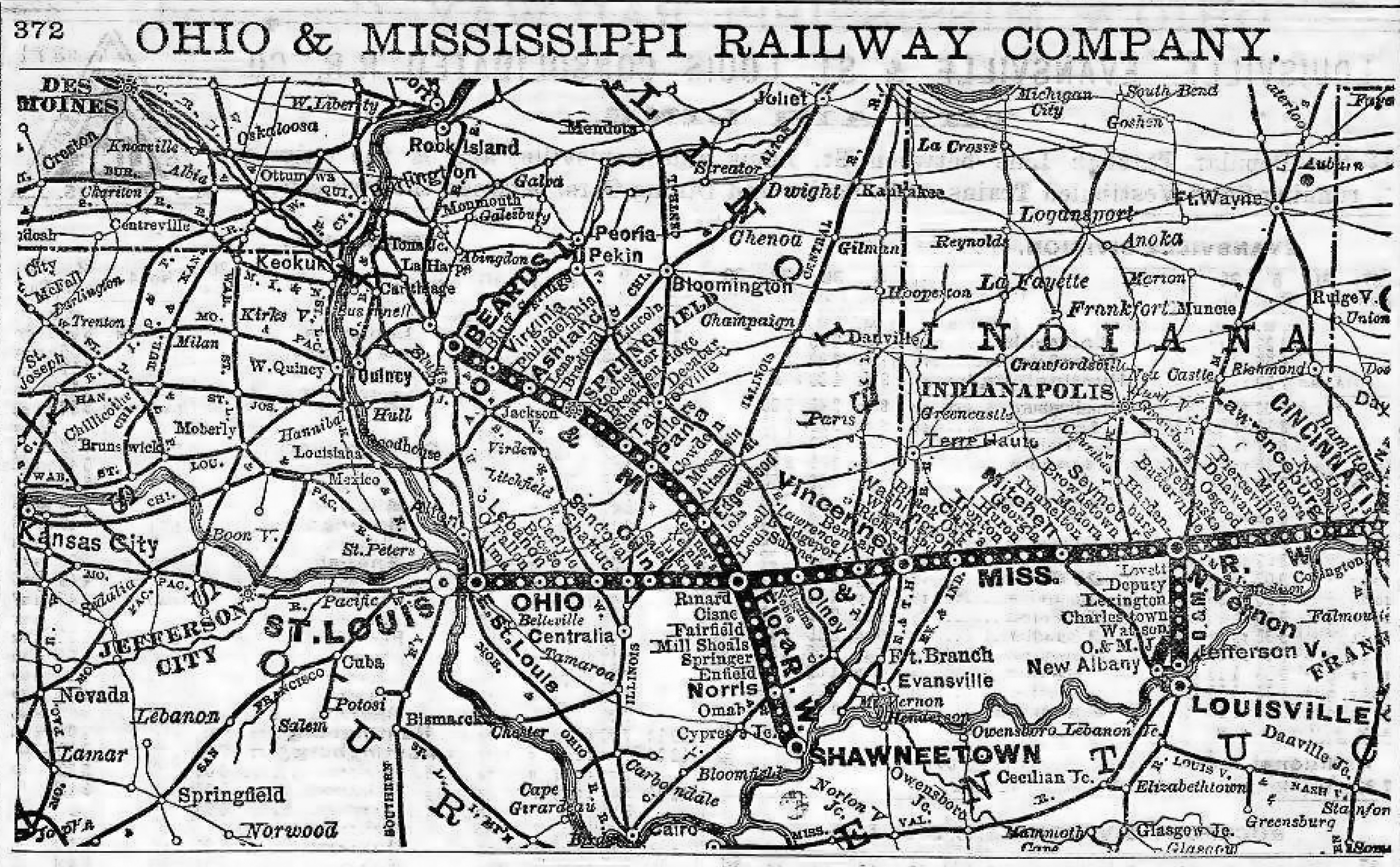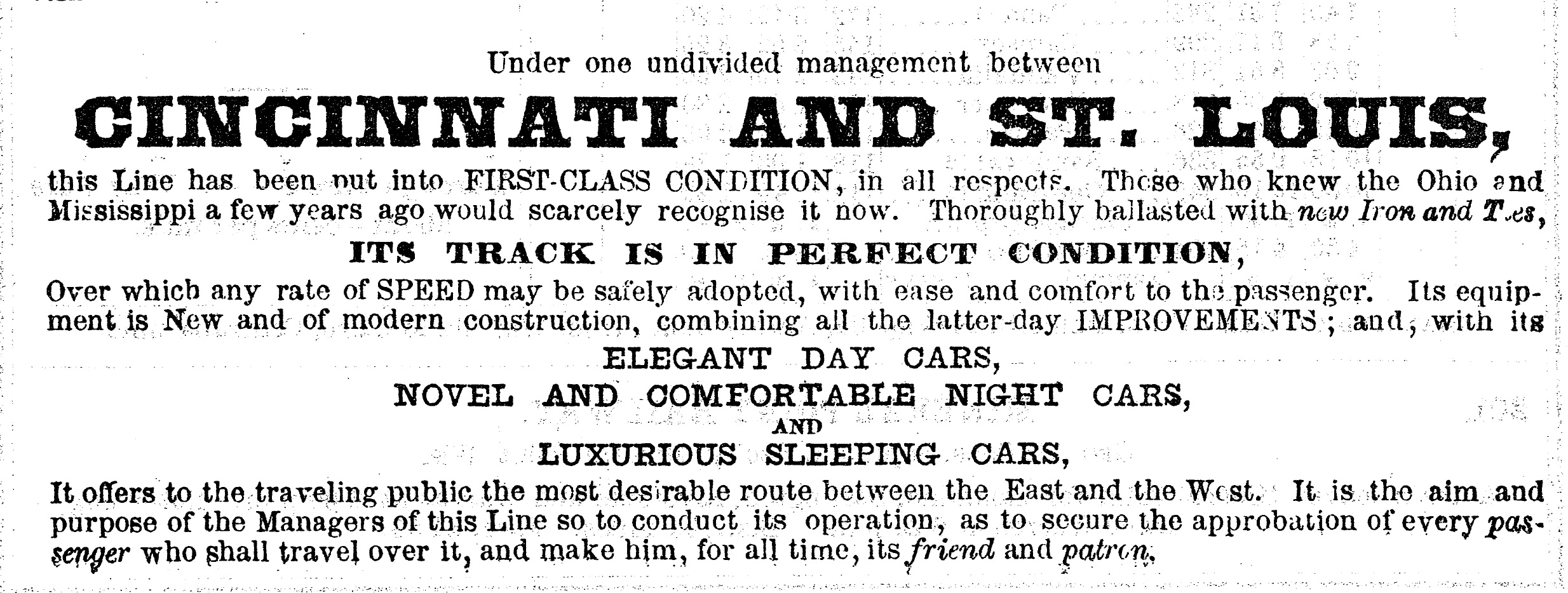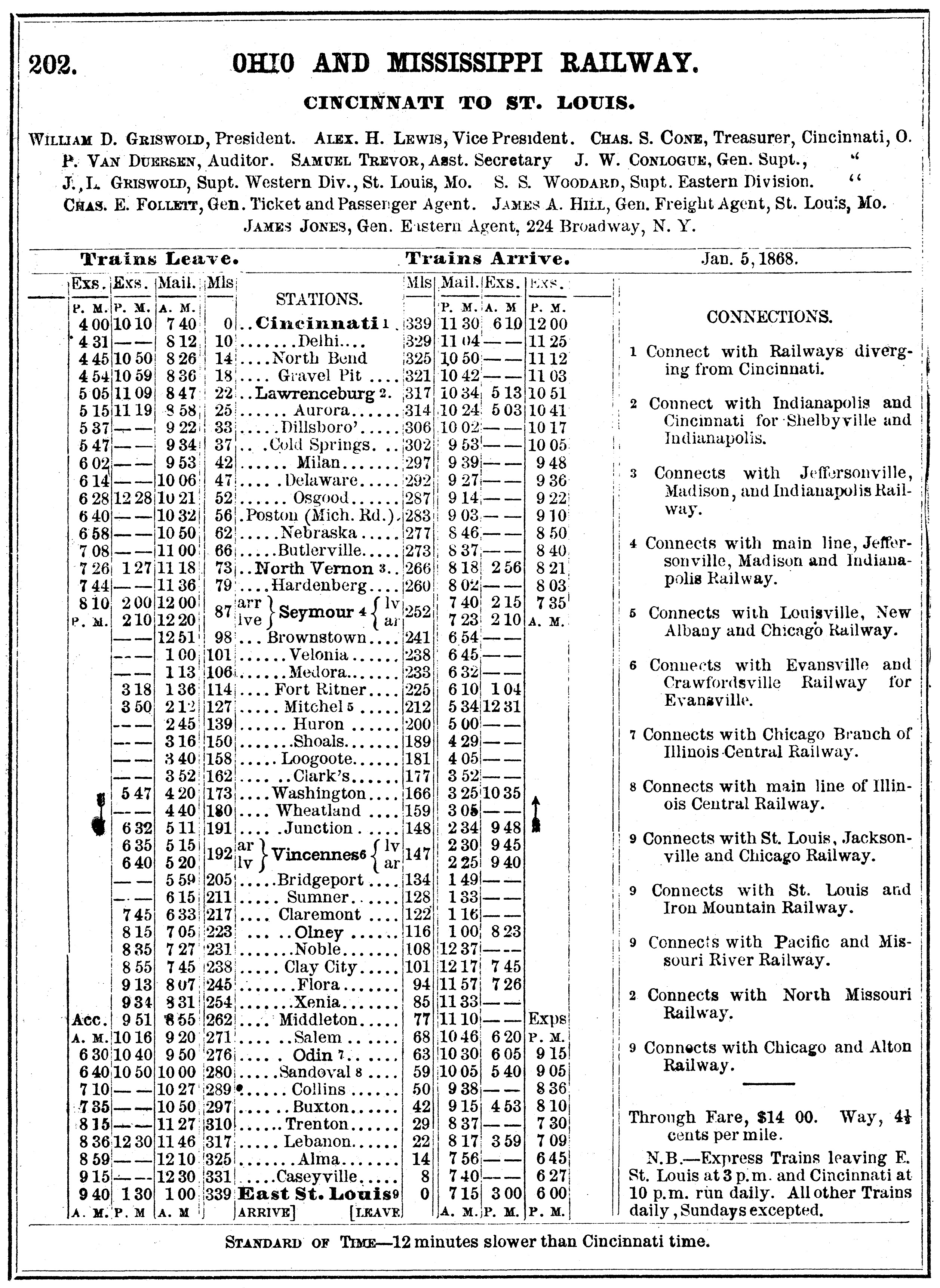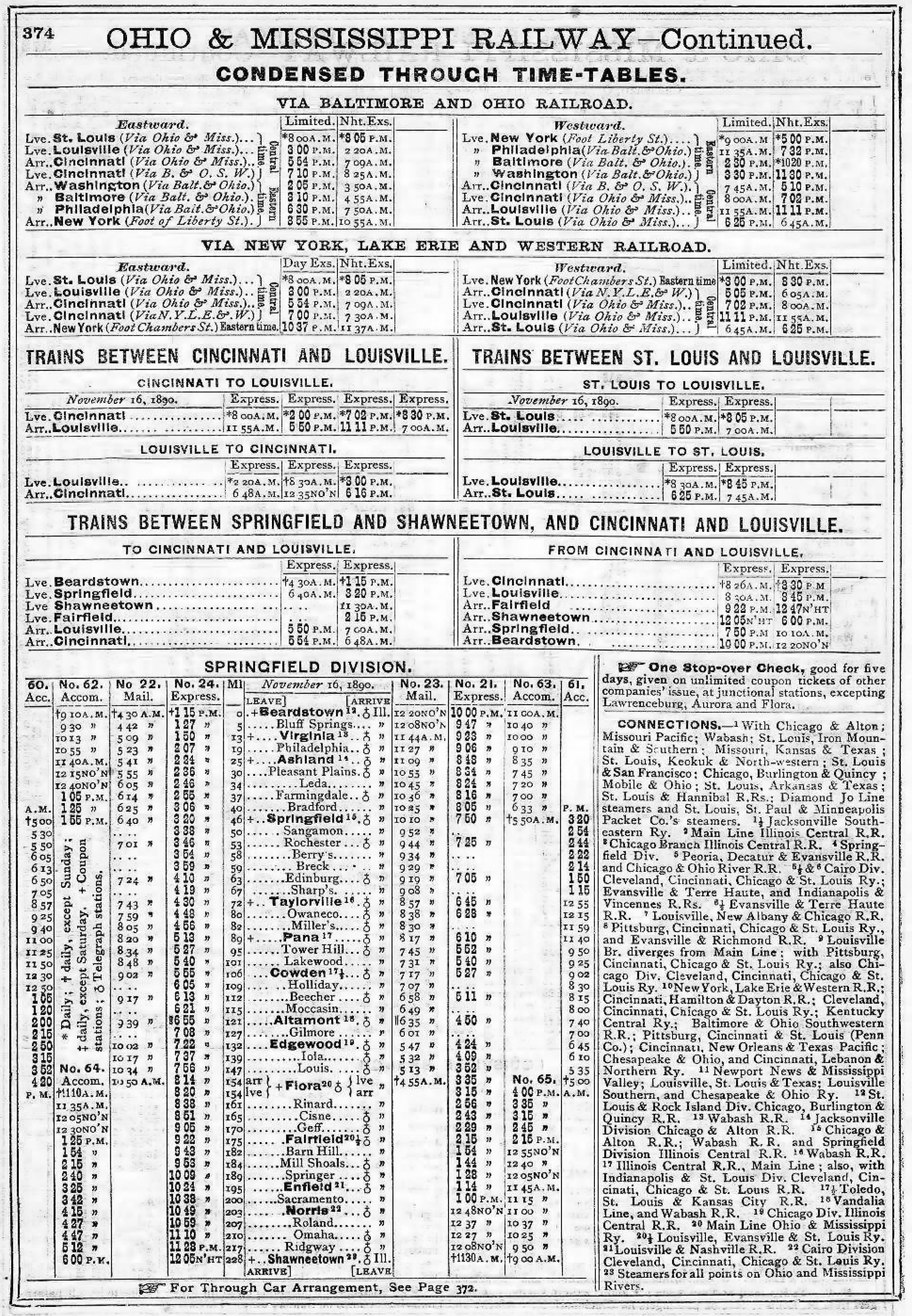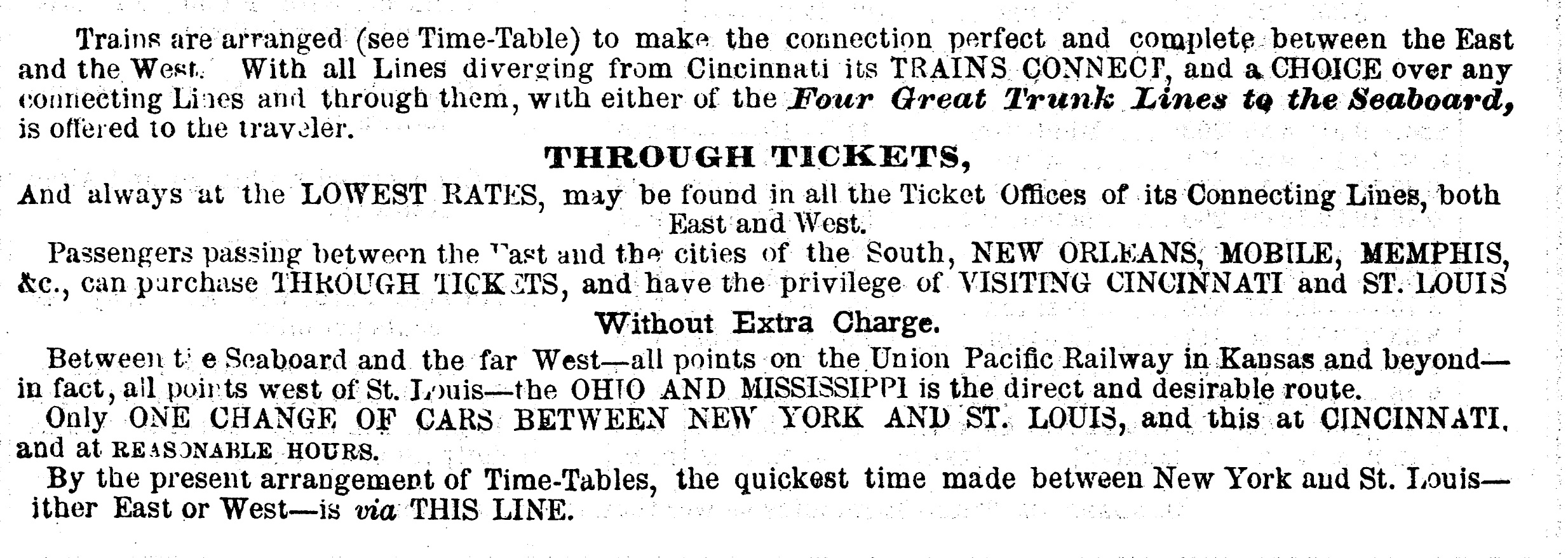Ohio and Mississippi Railway: Map, History, Timetables
Published: February 9, 2025
By: Adam Burns
Once the Baltimore & Ohio had reached Wheeling, Virginia in 1852 the railroad quickly expanded further west across Ohio, Indiana, and Illinois.
By 1857 the railroad had opened through service to St. Louis via a partnership with the Marietta & Cincinnati and Ohio & Mississippi. Both roads were completed that year and all three sytems began working closely to handle freight and passengers between Baltimore and St. Louis.
As the B&O continued its westward expansion it would acquire both systems, including the Northwestern Virginia in 1856 which provided a more direct route to the Ohio River via Grafton, Clarksburg, and Parkersburg, Virginia.
The Marietta & Cincinnati was added in 1882 (Marietta - Cincinnati, OH) while the Ohio & Mississippi (Cincinnati - St. Louis) was acquired in 1893. Both were folded into B&O's subsidiary, the Baltimore & Ohio Southwestern in 1900.
Sytem Map (1868)
System Map (1891)
The Ohio and Mississippi Railway (O&M) was a significant transportation artery in the 19th century that played a pivotal role in linking southern Ohio and Indiana towns with Cincinnati and East St. Louis.
Conceived during a period of rapid industrial expansion, the system was chartered in 1848 by the Indiana General Assembly. Promoters of the projected hoped to establish a direct all-rail route from Cincinnati to St. Louis which then represented the nexus of eastern commerce and the growing western frontier, respectively.
Construction of the O&M began in the early 1850s, spearheaded by prominent figures such as Ormsby M. Mitchel and John Brooks. Financial backing came from a blend of private and public funda Despite numerous challenges, including difficult terrain and financial constraints, the project pressed forward with significant momentum.
1891 Through Car Arrangement
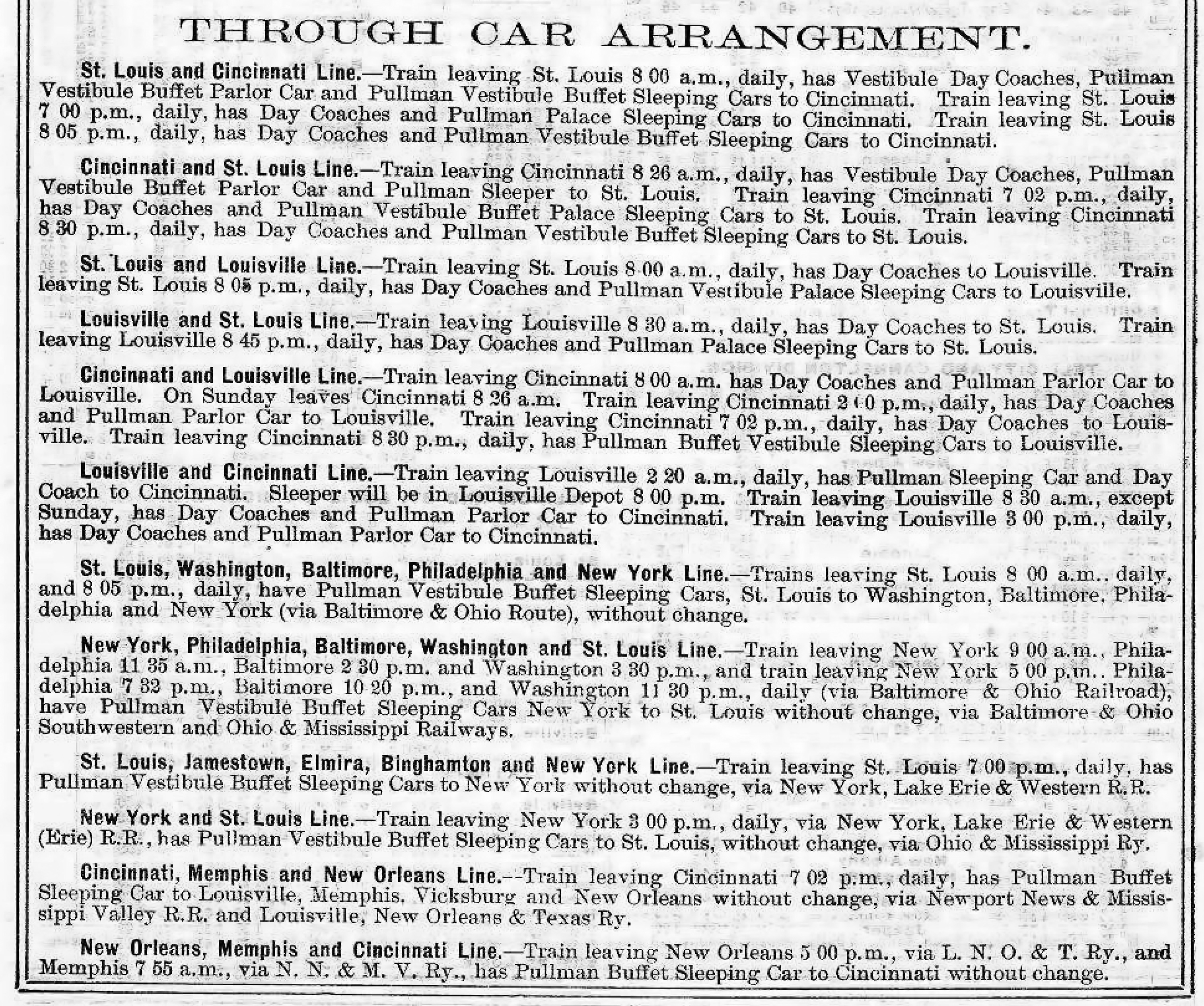
By 1857, the railroad was complete and formally opened, quickly becoming a critical conduit for freight and passenger traffic. Its 339-mile route significantly reduced travel time between Cincinnati and St. Louis and catalyzed economic growth by facilitating the movement of goods such as agricultural products, coal, and manufactured items.
Moreover, the O&M strengthened the cohesiveness of the Union during the Civil War by supporting the movement of troops and resources. In the postbellum period, the railroad encountered growing competition from other rail networks and faced periodic financial struggles, ultimately leading to a series of reorganizations and mergers.
Early Operations
Despite the O&M connecting two important cities and opening the then-Western Frontier, the railroad traversed southern Indiana and Illinois, areas that were (and still are) sparsely populated and underdeveloped. As a result, it did not generate sufficient traffic.
In addition, it was heavily in debt. Finally, the system was also built to the broad gauge of 6 feet and could not directly interchange with other railroads, like the Marietta & Cincinnati (M&C) that provided an eastern connection to the Ohio River.
The M&C itself interchanged with B&O at Marietta/Parkersburg, which provided continued through service to Grafton, Cumberland, and ultimately Baltimore. In spite of the O&M's issues the three railroads coordinated through passenger and freight services between Baltimore and St. Louis.
The through cars traveling between Baltimore and Cincinnati were transported across the Ohio River at Parkersburg, necessitating passengers to switch stations in Cincinnati to connect with the O&M. Despite this cumbersome arrangement, it afforded the B&O an uninterrupted rail route to St. Louis. An all-rail route was not achieved until the B&O's 1871 opening of bridges at Wheeling and Parkersburg.
In addition to its Cincinnati–East St. Louis main line, the O&M fielded two branches. One headed south from the main line at North Vernon to Jeffersonville, Indiana, across the Ohio River from Louisville, Kentucky. The other branch ran diagonally across Illinois from Beardstown on the Illinois River to Shawneetown on the Ohio River, crossing O&M’s main line at Flora.
Timetable (1868)
Timetables (1891)
B&O Acquisition
O&M converted its track to standard gauge on July 13, 1871, but the road’s financial condition caused the B&O to keep its distance for several years more. Not until 1893 was the O&M acquired to complete B&O’s route to St. Louis. The O&M was formally merged into Baltimore & Ohio Southwestern in 1900.
Meanwhile, the Columbus & Cincinnati Midland Railroad had built a 70-mile line southwest from Columbus to meet M&C at Midland City, Ohio. Completed in 1885, the C&M would become part of the B&O map five years later and provide B&O with a direct through route between Pittsburgh and Cincinnati via Wheeling and Columbus.
Legacy
In 1985 then CSX/Chessie System elected to downgrade the former B&O St. Louis main line, abandoning much of the Monongah Division through West Virginia and Ohio Division through Ohio.
While most of the former O&M has avoided a similar fate it is no longer the important corridor it was during the B&O era. What remains today operates as part of CSX's Indiana Subdivision and Illinois Subdivision.
The O&M’s legacy persists in its contribution to the infrastructural and economic development of the United States, as well as in shaping the Midwest's integration into the national rail network.

